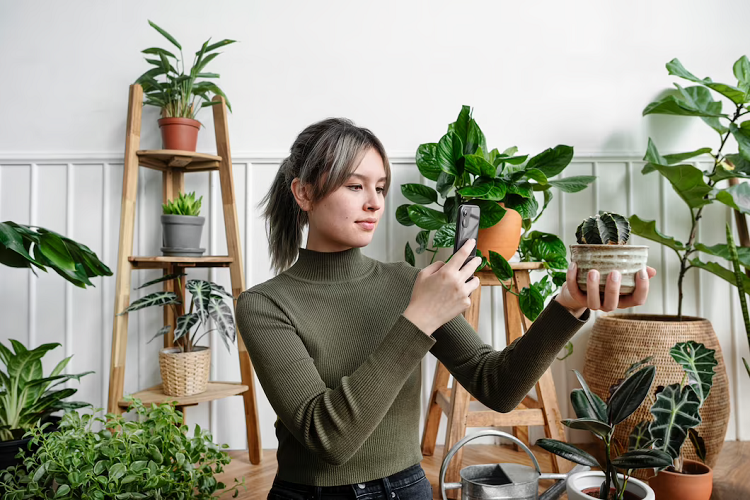Sustainability is starting to become a consideration in all the decisions we make, including how we decorate our homes. With furniture creating a staggering 12.2 million tonnes of waste in 2017, we can only forecast that this quality increases and will continue to increase unless businesses and homeowners begin to be more eco-conscious. Fortunately, incorporating sustainability in home decor doesn’t have to be difficult or expensive.
There is rarely the opportunity for a 0-waste household, however, small integrations of eco-friendly habits when decorating our home can have a knock-on effect in influencing friends and neighbors and embedding the value in being sustainable when possible

Here are some tips to help you easily incorporate sustainability in home decor:
Choose eco-friendly material
The materials used in your home decor can have a significant impact on the environment. When selecting materials for your home decor, look for options that are sustainable and eco-friendly. For example, opt for furniture made from bamboo or reclaimed wood, which are renewable and have a lower environmental impact than traditional hardwoods. Choose fabrics made from natural materials such as cotton, wool, or linen instead of synthetic materials which can be harmful to the environment
Upcycle and repurpose
We all know the stress of taking out old furniture to the tip. Whilst throwing the old way to make way for the new might seem like the more glamorous option, we should instead consider upcycling or repurposing it to give it new life. For example, an old dresser can be repurposed into a bathroom vanity or a bookshelf. A simple coat of paint with the addition of new draw handles can completely change the appearance of an old dresser. A worn-out rug can be cut into smaller pieces and used as door mats or coasters. Upcycling and repurposing not only reduce waste but also add a unique and personal touch to your home decor.
Use sustainable lighting options
Lighting can have a significant impact on your energy consumption and carbon footprint. Choose energy-efficient light bulbs, such as LEDs, which use less energy and last longer than traditional incandescent bulbs. Opt for natural light as much as possible by opening curtains and blinds during the day, which can also benefit your mood as well as sustainability. This not only reduces your energy consumption but also adds a warm and inviting atmosphere to your home.
Incorporate indoor plant
Indoor plants not only add a touch of natural beauty to your home decor but also have several health benefits. They purify the air, reduce stress, and improve concentration. Also, if your home is looking lifeless in any way, then the pop of color that plants provide can give the appearance of a much fresher space. Choose plants that are easy to care for and can thrive indoors, such as spider plants, snake plants, or peace lilies. Don’t be tempted to buy the artistically made fake plants, they will likely end up in a landfill when you get bored of them and the rejuvenating feeling real plants provide just can’t be matched!
Reduce, reuse, and recycle
The three R’s of sustainability, reduce, reuse, and recycle, can also be applied to your home decor. Reduce your consumption of new decor items by reusing and repurposing old ones. For example, you may repurpose an old chair by adding new upholstery with sustainable materials. Reuse items such as glass jars, wine bottles, or tin cans as vases or candle holders. Recycle materials such as paper, cardboard, or metal to reduce waste and conserve natural resources, and make sure anything you intend to recycle is placed into the right bins.
Choose sustainable bedding and linen
Bedding and linens can also have a significant impact on the environment. Choose bedding and linens made from organic and sustainable materials such as cotton, bamboo, or linen. These materials are grown without harmful pesticides and chemicals and have a lower environmental impact than traditional materials. Opt for bedding and linens in neutral colors, which not only create a calming and relaxing atmosphere but also make it easier to mix and match with different decor styles
Shop second-hand and vintage
Shopping second-hand and vintage is not only budget-friendly but also much more sustainable than buying from mass-waste-producing businesses. Instead of buying new decor items, consider shopping at charity shops, flea markets, or online marketplaces such as eBay or Etsy. Buying from independent decor creators is much more sustainable than buying cheap items at common retailers. You can often have bespoke pieces made from boho chic decor to luxury homeware. You can find unique and one-of-a-kind items that add a personal touch to your home decor while reducing waste and supporting sustainable practices
Final thoughts
In conclusion, we all can add sustainability to our home decor in small and easy ways. Whilst some homes might be aiming to be 0 waste producers, we can all make a minimal yet conscious effort to shop sustainability for our home decor. Even better, we can easily make the effort to repurpose our old, and unused furniture to add new life and energy to your special home.


